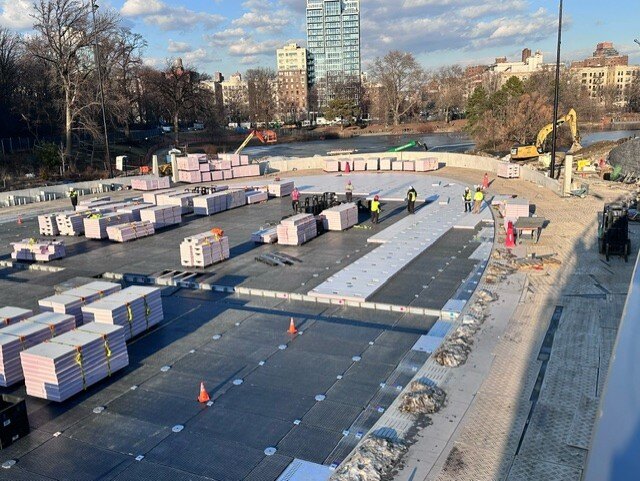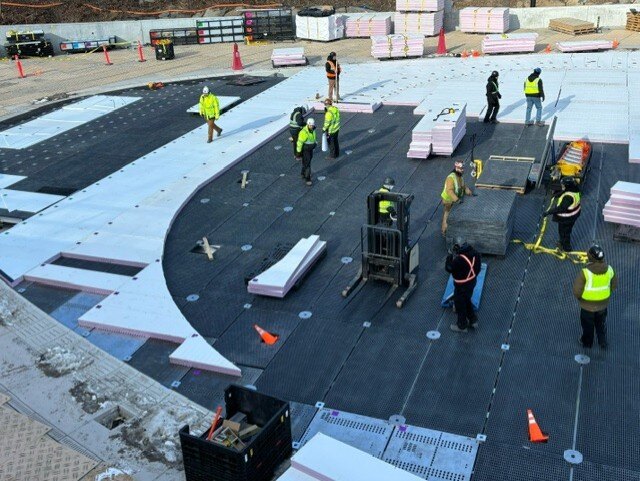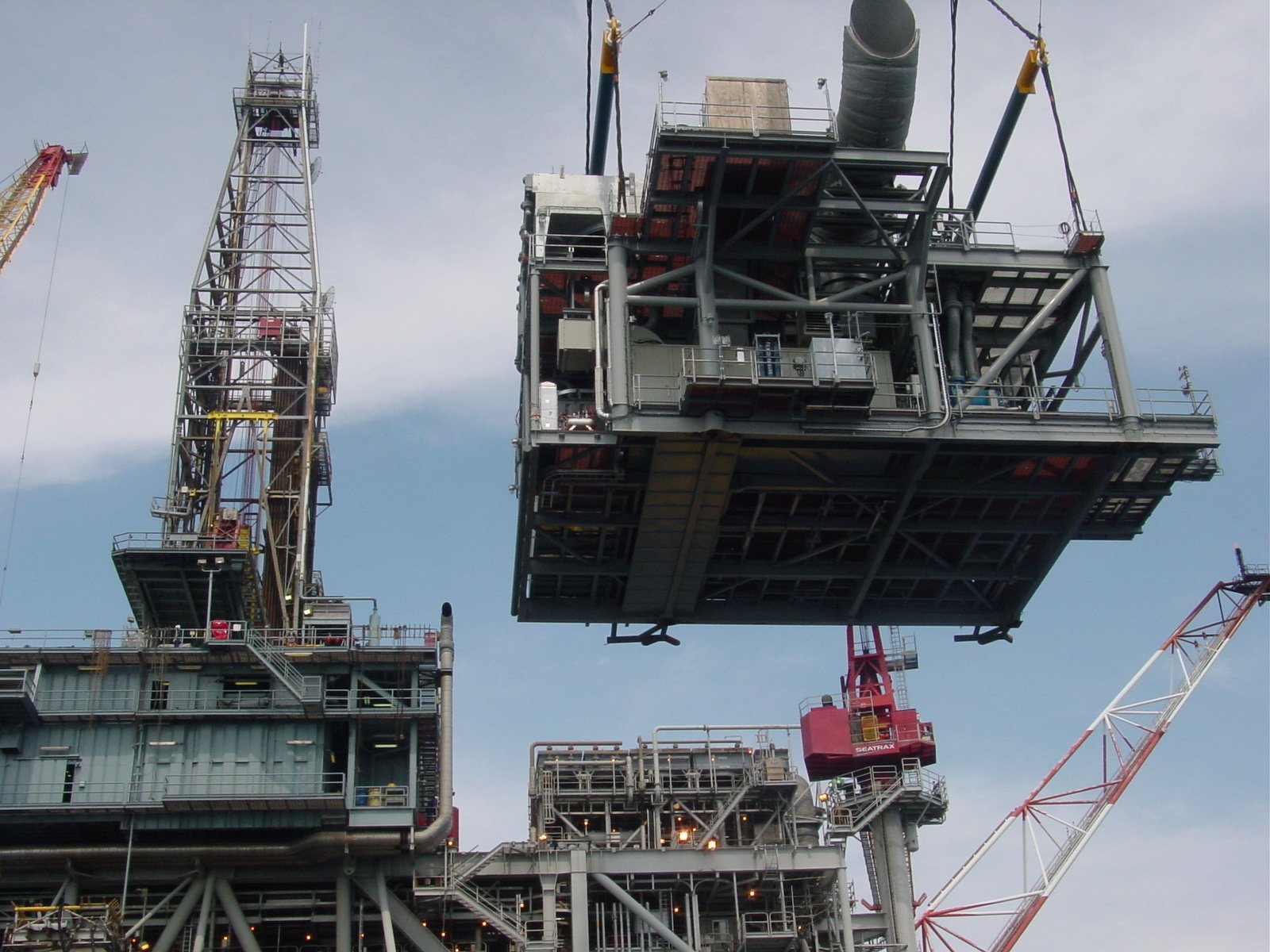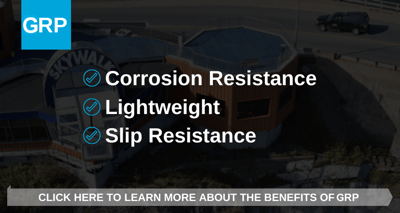As a modern and versatile composite building material, GRP in construction has become increasingly...
What is GRP in Construction? Advanced Composites in Building Now and in the Future
As a modern and versatile composite building material, GRP in construction has become increasingly popular in the past few decades. In this article, we will answer the question "what is GRP in construction" and uncover the reasons why GRP is rapidly transforming the way we build.
What Is GRP (Glass Reinforced Plastic)?
GRP, or Glass Reinforced Polymer, is a composite material comprised of a polymer matrix reinforced with strong fibres, most commonly glass fibres. This combination creates a finished material that exhibits exceptional strength and durability.
The manufacturing process typically involves impregnating glass fibres with a resin matrix, such as polyester, vinyl ester, or epoxy. The resin acts as a binding agent, holding the fibres together and transferring loads throughout the material. The resulting composite material exhibits a synergistic effect where the combined properties of the fibres and the resin create a material that is stronger and more versatile than either component alone.
GRP has witnessed a surge in popularity within the construction industry due to its exceptional properties and versatility. According to National Institute of Standards and Technology, GRP is increasingly being used in a wide range of applications - from infrastructure projects such as bridges and tunnels to building facades and industrial structures.
What Are the Applications of GRP in Construction?
GRP finds diverse applications across the construction industry, including:
Infrastructure:
Bridges, tunnels, and overpasses can be constructed using GRP while marine structures such as piers, docks, boat ramps, and offshore platforms benefit significantly from GRP's corrosion resistance and lightweight properties.
Municipal Projects:
GRP is an ideal choice for municipal infrastructure due to its exceptional durability and resistance to harsh outdoor conditions. Its long-lasting performance makes it a smart investment for cities aiming to build resilient public spaces that cater to both residents and tourists, while minimising maintenance costs over time.


A pool in a park built using Fibergrate GRP products.
Building Facades:
Architectural cladding panels made from GRP provide a variety of colours, textures, and finishes, enabling architects to create visually striking and unique building facades. Additionally, GRP can be used to fabricate decorative elements such as columns and beams, adding aesthetic appeal and durability to structures.
Industrial Applications:
In the oil and gas industry, GRP components play a vital role in offshore platforms, providing corrosion resistance and lightweight solutions for various applications.
Case Study: Shell Mars Offshore Platform

Fibergrate GRP used for offshore oil work platform
Shell's Mars exploration and production rig, located in the Gulf of Mexico, presents a challenging environment for any material. The combination of salt water spray, diesel fuel, and oil creates highly corrosive conditions. Traditionally, steel diamond plate was used on these platforms, but it suffered from corrosion and offered marginal slip resistance.
A competitor's GRP phenolic grating was initially installed on the Shell Mars platform; however, due to the lack of a UV coating, the grating began to fade and lose its structural properties.
Fibergrate addressed these challenges by replacing the initial grating with its own high-performance phenolic pultruded grating. It eliminated the need for sandblasting and repainting while improving slip resistance and UV protection.
The Future of GRP in Construction
The future of GRP in construction is bright, driven by ongoing research and development. Advancements in material properties are constantly being made, with stronger fibres, enhanced resin systems, and the development of smart materials leading to significant improvements in the mechanical properties of GRP composites.
Sustainability is also a key focus, with the development of bio-based resins, the utilisation of recycled fibres, and advancements in recycling technologies increasing the environmental friendliness of GRP. Furthermore, advancements in manufacturing techniques, such as automated fabrication processes, and the development of hybrid composites, are revolutionising the production of GRP structures.
Enhanced fire resistance is another area of significant progress, with the development of new coatings, fire-retardant additives, and improved design strategies expanding the application of GRP in critical infrastructure. Fibergrate’s Firewalk Phenolic grating is a good example.
GRP is finding increasing applications in diverse sectors. In renewable energy, GRP is used for larger wind turbine blades. In infrastructure, it plays a vital role in bridges, pipelines, and other critical infrastructure projects.
Finally, cost reductions are driving the wider adoption of GRP. Economies of scale, advancements in manufacturing processes, and the increasing availability of raw materials are making GRP more cost-competitive with traditional materials, making it a more attractive option for a wider range of construction projects.
The Unique Properties of GRP in Construction
- High Strength-to-Weight Ratio
- Corrosion Resistance
- Durability and Longevity
- Versatility and Design Flexibility
For more on the benefits of GRP, check out our infographic.
What is GRP in Construction? Your Competitive Advantage.
GRP composites are revolutionising the construction industry, offering a compelling alternative to traditional materials. By combining exceptional strength, durability, and corrosion resistance with design flexibility and sustainability, GRP is poised to play an increasingly important role in shaping the built environment of the future.
Contact Fibergrate today to learn more about how our innovative GRP solutions can contribute to the success of your next construction project.
Want to Keep Reading?
- 4 Ways to Use GRP in Mining Construction & Mine Infrastructure
- Durable Data Centre Design Featuring GRP
Learn more about the benefits of GRP below...
Topics: Corrosion Resistant, Slip Resistant, Construction, GRP


